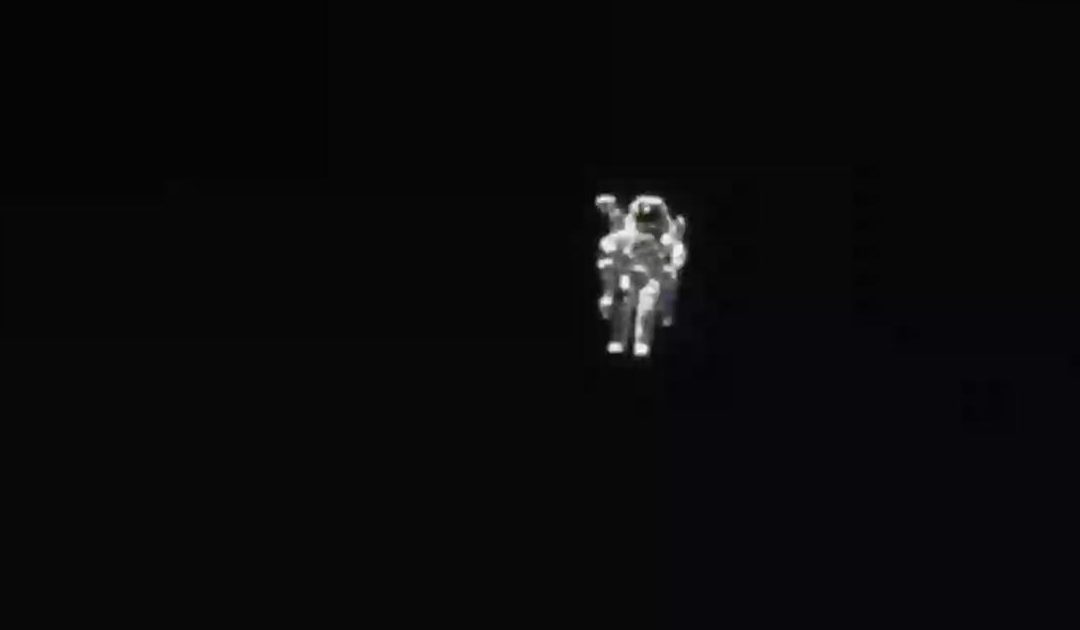Before his passing, the astronaut shared his experience of an extraordinary mission
The astronaut behind one of the most terrifying images ever captured in space once explained why it holds such an eerie quality.
Bruce McCandless II, who made history with his groundbreaking mission, shared his experience before he passed away.
Among his many achievements, one haunting photograph continues to captivate space enthusiasts and casual observers alike.
For most of us, the vast emptiness of space is already unsettling. The idea of being completely detached from Earth, with no solid ground beneath, is unnerving.
Add to that the constant threat of space debris, the possibility of alien structures, and the mysterious organisms found clinging to the outside of the International Space Station, and it’s easy to see why space exploration is as daunting as it is fascinating.
Yet, one of the most terrifying moments in space wasn’t just imagined—it was captured on camera.
In 1984, at the age of 47, McCandless embarked on a Space Shuttle mission with a critical objective: deploying two communication satellites, marking a major milestone for NASA.
But that wasn’t the only historic first. The astronaut from Boston became the subject of what is now known as one of the most chilling images ever taken in space.
This happened during his pioneering attempt at the first untethered spacewalk—an event that cemented his place in spaceflight history.
During the mission, McCandless and his fellow astronaut Bob Stewart strapped themselves into Manned Maneuvering Units (MMUs) before stepping out of the shuttle and into the vastness of space.
The MMUs, advanced jet-powered backpacks, gave them the ability to move freely without being tethered to the spacecraft.
Drifting at an astonishing speed of around 28,900 kilometers per hour, they navigated open space in a way no astronaut had done before.
For McCandless, this meant spending nearly seven hours floating in the abyss, a feat that remains one of the most iconic moments in space exploration.
The unforgettable image captured from the Challenger shuttle shows McCandless floating entirely untethered above Earth.
Even for those without astrophobia, the sight of a lone figure suspended in the dark void of space is enough to send shivers down the spine.
More than 30 years after this historic spacewalk, McCandless reflected on the mission in an interview with The Guardian.
He recalled that there had been significant concern within NASA leading up to the event.

NASA said the picture was the ‘most terrifying space photo’
NASA
“My wife was at mission control, and there was quite a bit of apprehension,” he shared.
Despite how terrifying the image appears, McCandless admitted that the experience wasn’t as nerve-wracking as one might think.
He elaborated: “I wanted to say something similar to Neil [Armstrong] when he landed on the Moon, so I said, ‘It may have been a small step for Neil, but it’s a heck of a big leap for me.’ That loosened the tension a bit.”
Although he had been warned about the profound silence of space, his moment of serenity didn’t last long.

The astronaut was walking for almost seven hours
NASA/MMU
He jokingly recalled that instead of complete silence, his radio was filled with multiple voices firing off questions at once, making for anything but a peaceful experience.
He explained further: “My walk lasted six hours 45 minutes, and I stayed alongside the shuttle the whole time, moving 100 yards one way, 100 yards back.”
“I was travelling at more than 18,000 miles an hour, but wasn’t aware of it, because the shuttle was going at the same speed.”
“It was only when I looked at the Earth that I could tell we were moving fairly rapidly.”
At one point, as he drifted over the Florida peninsula, he found comfort in recognizing a familiar sight far below.
Reflecting on his extraordinary journey, he expressed: “It was a wonderful feeling, a mix of personal elation and professional pride: it had taken many years to get to that point.”
After spending more than 312 hours in space, McCandless retired from NASA in 1990. He later went on to contribute to the aerospace industry, working with Lockheed Martin Space Systems.
In 2017, at the age of 80, McCandless passed away. He was laid to rest with honor at the United States Naval Academy Cemetery in Annapolis, marking the final chapter in a life filled with groundbreaking achievements.

